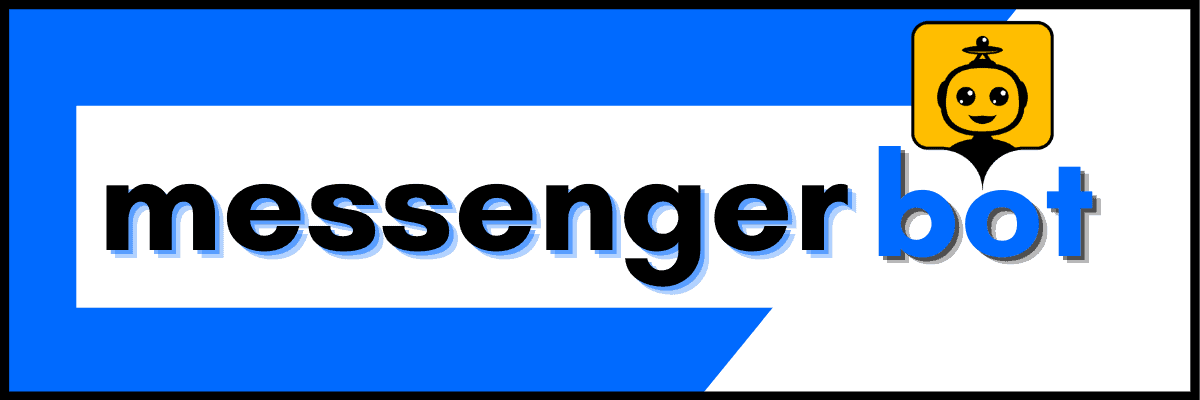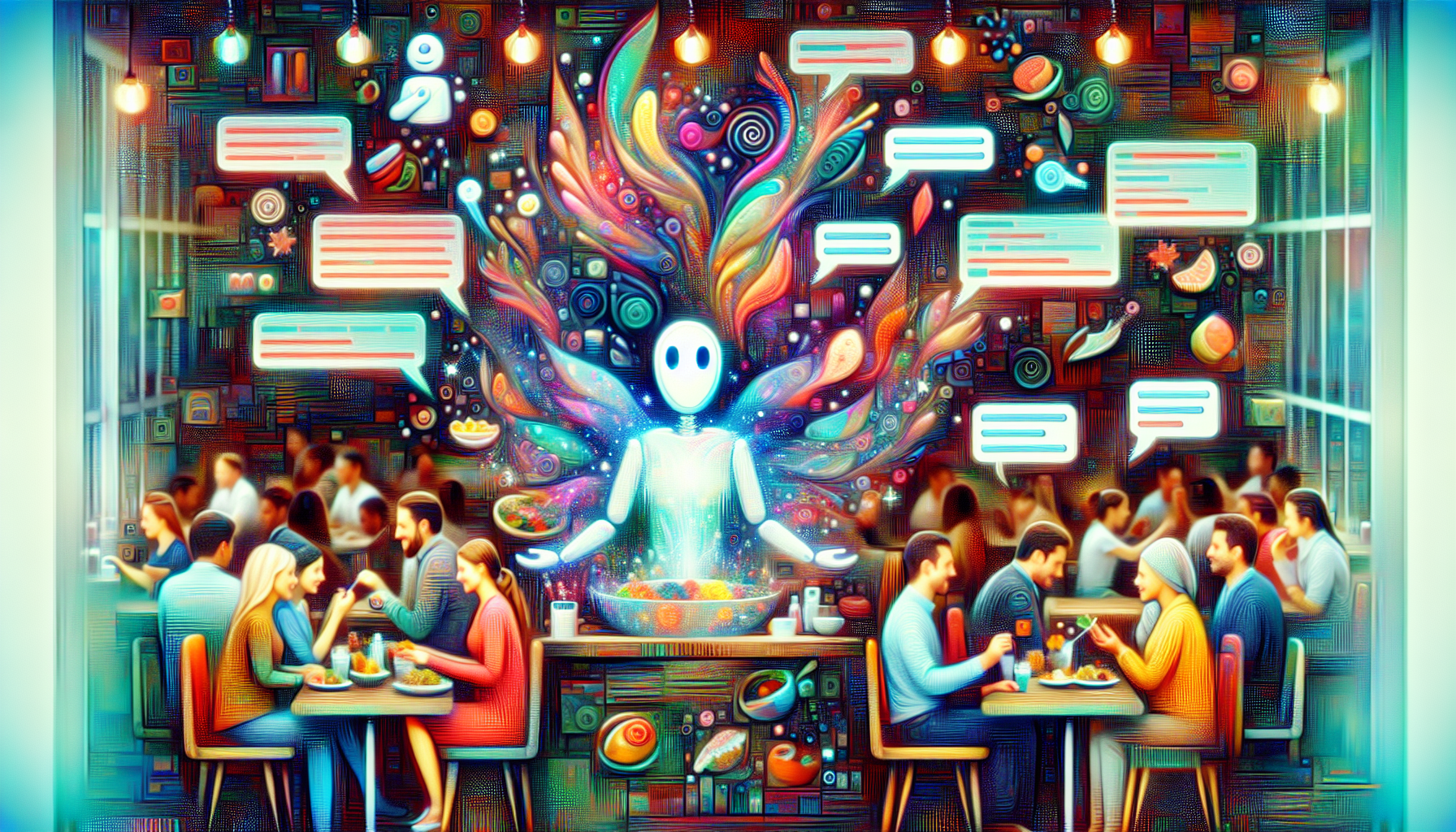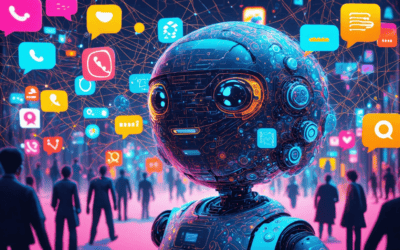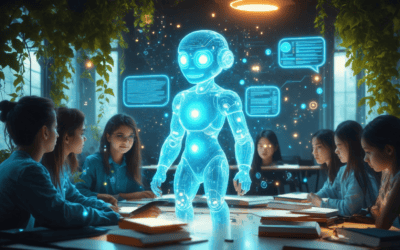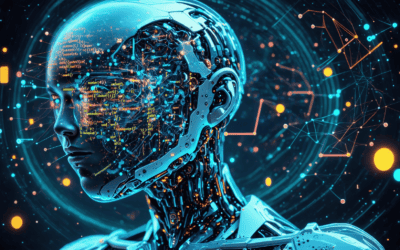In today’s fast-paced dining landscape, the integration of a chatbot for restaurants is not just a trend; it’s a transformative solution that can significantly enhance customer experience and operational efficiency. This article delves into how a restaurant bot can elevate customer engagement, streamline service, and ultimately drive sales. We will explore the various benefits of utilizing a chatbot for businesses, including its ability to provide instant responses and personalized interactions. Additionally, we will examine free chatbot options available for restaurants, analyze the costs associated with implementing an AI chatbot, and highlight successful case studies from major restaurant chains like Starbucks. As we navigate through the evolving role of chatbots in the restaurant industry, you will discover best practices for integrating these innovative tools into your operations, ensuring that your establishment stays ahead in a competitive market. Join us as we uncover the future trends of restaurant chatbots and their impact on enhancing customer service and efficiency.
How Can a Chatbot for Restaurants Enhance Customer Engagement?
Can restaurants use a chatbot?
Yes, restaurants can effectively utilize chatbots to enhance customer service and streamline operations. Here are several key functionalities and benefits of implementing chatbots in the restaurant industry:
- Order Management: Chatbots can facilitate the ordering process by allowing customers to place orders directly through messaging platforms or the restaurant’s website. This not only improves efficiency but also reduces wait times for customers. According to a study by QSR Magazine, 70% of customers prefer ordering through digital channels, highlighting the growing trend of online ordering.
- Real-Time Updates: Chatbots can provide customers with real-time updates on their order status, from preparation to delivery. This transparency enhances the customer experience and builds trust. A report from Statista indicates that 60% of consumers appreciate receiving updates about their orders.
- Personalized Recommendations: By analyzing user data, chatbots can offer personalized dish recommendations based on previous orders and preferences. This tailored approach can increase customer satisfaction and encourage repeat business. Research from McKinsey shows that personalization can lead to a 10-15% increase in sales.
- Reordering Convenience: Chatbots can store customer preferences and order history, enabling regular customers to reorder their favorite dishes with just a few clicks. This feature not only saves time but also enhances customer loyalty. According to a survey by Toast, 50% of diners are more likely to return to a restaurant that offers a seamless reordering experience.
- Table Reservations: Many chatbots can manage table reservations, allowing customers to book tables easily without the need for phone calls. This functionality can reduce the workload on staff and improve operational efficiency. A study by OpenTable found that 80% of diners prefer making reservations online.
- Customer Feedback: Chatbots can also collect customer feedback post-visit, providing valuable insights into customer satisfaction and areas for improvement. Engaging with customers through chatbots can lead to higher response rates compared to traditional feedback methods.
In conclusion, the integration of chatbots in restaurants not only enhances operational efficiency but also significantly improves the customer experience. As the restaurant industry continues to evolve, leveraging AI technology like chatbots will be crucial for staying competitive and meeting customer expectations.
Benefits of using a chatbot for restaurants
Implementing a chatbot for restaurants offers numerous advantages that can transform customer interactions and operational workflows:
- Increased Efficiency: Chatbots can handle multiple customer inquiries simultaneously, reducing the burden on staff and allowing them to focus on more complex tasks. This leads to faster service and improved customer satisfaction.
- Cost-Effective Solution: Utilizing a restaurant bot can significantly lower operational costs by automating routine tasks such as answering FAQs, taking orders, and managing reservations.
- 24/7 Availability: Chatbots provide round-the-clock service, ensuring that customers can interact with the restaurant at any time, whether it’s to place an order or ask questions.
- Enhanced Customer Engagement: By offering personalized interactions and timely responses, chatbots can foster a stronger connection between the restaurant and its customers, leading to increased loyalty and repeat business.
- Data Collection and Insights: Chatbots can gather valuable data on customer preferences and behaviors, enabling restaurants to tailor their offerings and marketing strategies effectively.
Overall, the adoption of chatbots for businesses, particularly in the restaurant sector, is a strategic move that can lead to improved customer experiences and operational efficiencies.
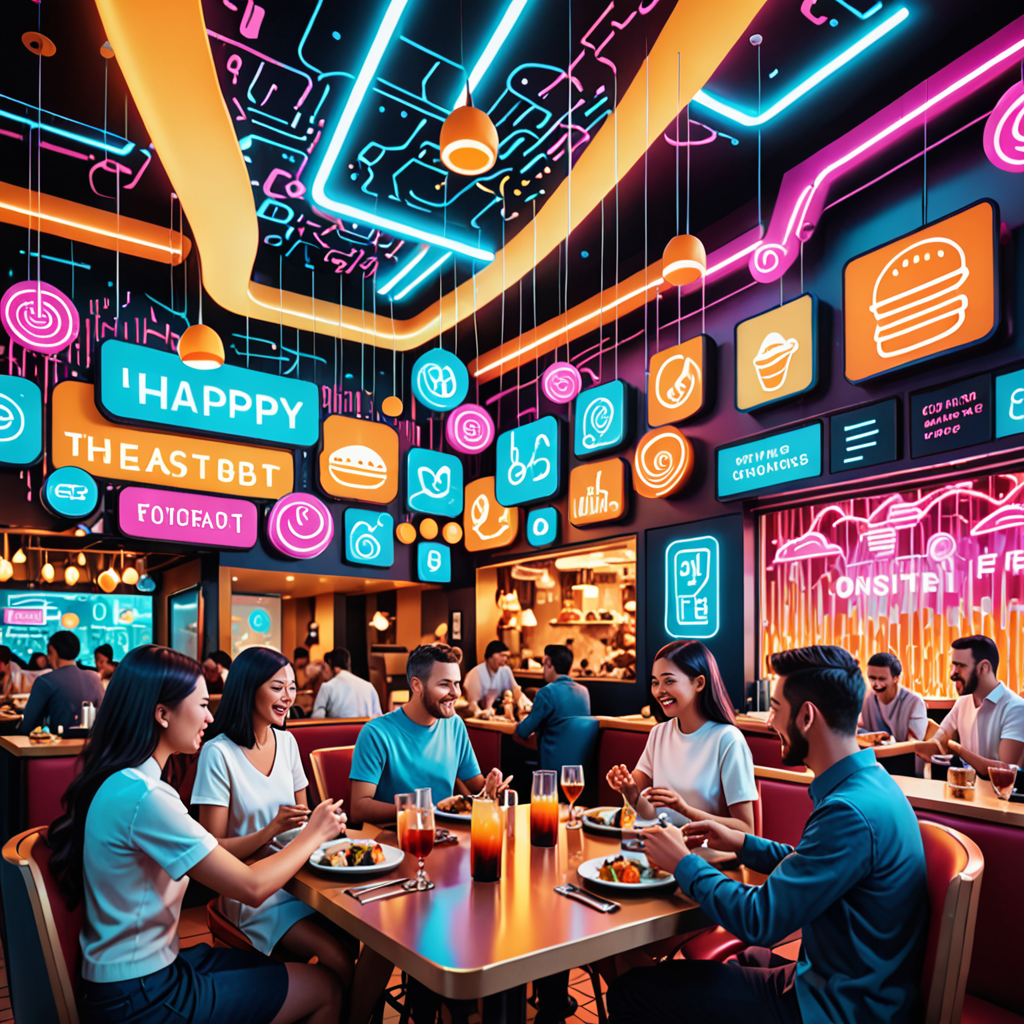
Exploring Free Chatbot Options for Restaurants
In today’s digital landscape, many restaurants are looking for innovative ways to enhance customer interaction and streamline operations. One effective solution is the implementation of a chatbot for restaurants. But are there free options available? Absolutely! There are several free AI chatbots that can significantly benefit restaurants by improving customer engagement and operational efficiency.
Is there a free AI chatbot?
Yes, there are several free AI chatbots available that offer a range of functionalities. Here are some notable options:
- ChatGPT: Developed by OpenAI, ChatGPT is a versatile AI chatbot that can engage in conversations, answer questions, and provide information on various topics. It is accessible for free through the OpenAI website and offers a user-friendly interface.
- Claude by Anthropic: Claude is a free AI chatbot that connects to the internet, providing real-time information and sources for its responses. Users can easily interact with Claude by typing their queries into the “ask anything” box on its website.
- Perplexity AI: This chatbot not only answers questions but also cites sources, enhancing the credibility of its responses. Perplexity AI is designed for ease of use, allowing users to start chatting immediately upon visiting the site.
- Replika: While primarily designed for companionship, Replika offers a free version that allows users to chat and engage in meaningful conversations. It learns from interactions, making the experience more personalized over time.
- Google Bard: Google’s AI chatbot, Bard, is another free option that leverages Google’s extensive data to provide informative and relevant answers to user queries.
These chatbots are continually evolving, incorporating the latest advancements in AI technology to improve user experience and response accuracy. For more information on AI chatbots and their functionalities, you can refer to sources like ZDNet and TechCrunch.
Top free chatbot for restaurants available today
When it comes to selecting the best free chatbot for restaurants, several options stand out. Each of these chatbots can enhance customer service and streamline restaurant operations:
- ChatGPT: Ideal for answering customer inquiries about menu items, reservations, and special offers, ChatGPT can be integrated into restaurant websites to provide instant responses.
- Claude by Anthropic: This chatbot’s ability to provide real-time information makes it a great choice for restaurants that want to keep customers updated on daily specials or events.
- Perplexity AI: With its source-citing feature, Perplexity AI can enhance the credibility of the information provided to customers, making it a reliable choice for restaurants.
- Replika: Although primarily a companion chatbot, Replika can be utilized in restaurants to engage customers in a friendly manner, enhancing their overall experience.
- Google Bard: Leveraging Google’s extensive data, Bard can assist restaurants in providing accurate and relevant information to customers, improving engagement.
By integrating a restaurant chatbot, businesses can not only improve customer satisfaction but also optimize their operational efficiency. For more insights on how chatbots can revolutionize customer service, check out our article on best AI chatbots for restaurants.
Understanding the Role of Bots in the Restaurant Industry
What is a Bot in Restaurants?
A bot in restaurants refers to the Bar Order Ticket (BOT) and Kitchen Order Ticket (KOT), essential components in the food and beverage service industry. These tools are crucial for ensuring that orders are accurately communicated and efficiently processed.
- Kitchen Order Ticket (KOT): A document used by the kitchen staff to track and prepare food orders. It includes details such as the table number, order items, and any special instructions.
- Bar Order Ticket (BOT): Similar to the KOT, the BOT is used for beverage orders, ensuring that bartenders can efficiently prepare drinks as requested by guests.
The clarity and accuracy of both KOT and BOT are vital for maintaining service efficiency and customer satisfaction. These tickets help streamline the order process, allowing for better organization in busy restaurant environments. Establishing a standardized format for KOT and BOT can enhance readability and reduce errors, while regular training for staff on how to fill out and interpret these tickets can improve overall service quality. Many modern restaurants are adopting digital systems for KOT and BOT, which can further enhance order accuracy and speed by integrating with point-of-sale (POS) systems.
Examples of Successful Restaurant Chatbot Implementations
Chatbots for restaurants have revolutionized customer interactions, providing a seamless experience from order placement to customer support. Here are some notable examples:
- Domino’s Pizza: Their chatbot allows customers to place orders directly through Facebook Messenger, making the process quick and convenient.
- Starbucks: Utilizing a chatbot for their mobile app, Starbucks enables users to customize their orders and pay ahead, enhancing the customer experience.
- Chipotle: Chipotle’s chatbot assists customers in placing orders and provides information about menu items, showcasing the versatility of restaurant bots.
These implementations demonstrate how restaurant chatbots can improve operational efficiency and enhance customer satisfaction. By integrating chatbots into their systems, restaurants can streamline communication, manage orders effectively, and ultimately drive sales. For more insights on the best AI chatbots for restaurants, explore this resource.
Cost Analysis of Implementing an AI Chatbot
Implementing a chatbot for restaurants can significantly enhance customer engagement and operational efficiency. However, understanding the financial implications is crucial for restaurant owners considering this technology. Here’s a detailed look at the costs associated with deploying an AI chatbot.
How much does it cost to have an AI chat bot?
The cost of developing an AI chatbot can vary significantly based on several factors, including complexity, functionality, and deployment method. Here’s a detailed breakdown:
- Custom Development:
- For fully customized AI chatbots, prices typically range from $75,000 to $150,000 or more. This includes extensive features such as natural language processing (NLP), machine learning capabilities, and integration with existing systems.
- Companies like Master of Code and Chatbots.org provide insights into real-world pricing based on project scope and requirements.
- Chatbot as a Service (CaaS):
- CaaS solutions offer a more budget-friendly option, with costs starting around $5,000 to $20,000 for basic functionalities. However, these solutions may come with limitations in customization and scalability.
- Popular platforms such as Dialogflow, Microsoft Bot Framework, and Chatfuel provide tiered pricing models that can accommodate various business needs.
- Ongoing Maintenance and Updates:
- It’s important to consider ongoing costs for maintenance, which can range from $1,000 to $5,000 per month depending on the chatbot’s complexity and the frequency of updates required.
- Additional Factors Influencing Cost:
- Integration Needs: Costs can increase if the chatbot needs to integrate with multiple APIs or third-party services.
- User Volume: Higher user engagement may necessitate more robust infrastructure, impacting overall costs.
- Support and Training: Providing user support and training for staff can also add to the total expenditure.
For a comprehensive understanding of AI chatbot pricing, refer to resources from Gartner and Forrester, which provide market analysis and trends in AI technology costs.
Factors influencing the cost of restaurant chatbots
When evaluating the costs associated with restaurant chatbots, several factors come into play that can significantly influence the overall investment:
- Complexity of Features: The more advanced features you want—such as multilingual support, integration with POS systems, or advanced analytics—the higher the cost. A restaurant bot that can handle complex queries and provide personalized recommendations will require more sophisticated development.
- Deployment Method: Whether you choose a custom-built solution or a free chatbot for restaurants can greatly affect costs. While custom solutions offer tailored functionalities, they come at a premium compared to ready-made options.
- Volume of Interactions: Anticipating the volume of customer interactions can help determine the necessary infrastructure. High traffic may require more robust hosting solutions, which can increase costs.
- Integration with Existing Systems: If your restaurant already uses specific software for reservations or inventory management, integrating the chatbot with these systems can add to the overall cost.
Understanding these factors will help restaurant owners make informed decisions about investing in a chatbot for business use, ensuring they choose a solution that aligns with their operational needs and budget.

Case Studies: Chatbots in Major Restaurant Chains
Does Starbucks Use Chatbots?
Starbucks is leveraging AI chatbots to significantly enhance its customer experience. These chatbots serve multiple functions that streamline interactions and improve service efficiency. Here’s a comprehensive overview of how Starbucks utilizes chatbots:
1. **Order Placement**: Customers can place orders through the Starbucks mobile app or website using chatbots. This feature allows for a seamless ordering process, reducing wait times and minimizing errors. According to a study by Juniper Research, chatbots can handle up to 80% of routine customer inquiries, which enhances operational efficiency.
2. **Payment Processing**: Chatbots facilitate secure payment transactions, allowing customers to complete their purchases quickly and conveniently. This integration not only speeds up the checkout process but also enhances customer satisfaction by providing a frictionless experience.
3. **Personalized Recommendations**: Utilizing machine learning algorithms, Starbucks chatbots analyze customer preferences and purchase history to offer tailored drink and food suggestions. This personalization increases customer engagement and loyalty, as highlighted in a report by McKinsey, which states that personalized experiences can lead to a 10-30% increase in revenue.
4. **Customer Support**: The chatbots are equipped to handle common customer inquiries, such as store hours, menu items, and loyalty program details. This 24/7 availability ensures that customers receive immediate assistance, improving overall satisfaction and reducing the workload on human staff.
5. **Feedback Collection**: Starbucks uses chatbots to gather customer feedback post-purchase. This data is invaluable for understanding customer preferences and improving service offerings. A study by Gartner indicates that organizations that actively seek customer feedback can improve their customer retention rates by up to 25%.
6. **Integration with Voice Assistants**: Starbucks has also integrated its chatbot capabilities with voice assistants like Amazon Alexa and Google Assistant, allowing customers to place orders using voice commands. This innovation caters to the growing trend of voice commerce, which is expected to reach $40 billion by 2022.
In summary, Starbucks employs chatbots not only to streamline ordering and payment processes but also to enhance personalization, customer support, and feedback collection. This strategic use of AI technology positions Starbucks as a leader in customer service innovation within the coffee industry.
Other Notable Restaurant Chatbot Examples
Many other restaurant chains are also adopting chatbots to enhance their customer interactions and streamline operations. Here are a few notable examples:
1. **Domino’s Pizza**: The Domino’s chatbot allows customers to order pizza through various platforms, including Facebook Messenger and their mobile app. This convenience has significantly improved customer satisfaction and order accuracy.
2. **Chipotle**: Chipotle’s chatbot assists customers in placing orders and provides information about menu items. It also engages users with promotional offers, enhancing customer loyalty.
3. **Pizza Hut**: Pizza Hut utilizes a chatbot that can take orders, answer customer inquiries, and provide updates on delivery status. This integration has improved the overall customer experience by providing real-time information.
4. **KFC**: KFC’s chatbot offers customers the ability to place orders and receive personalized meal recommendations based on their preferences. This level of engagement helps to foster a deeper connection with customers.
These examples illustrate how restaurant chatbots are transforming customer interactions, making ordering more efficient, and enhancing overall satisfaction. By adopting chatbots, restaurants can not only improve service but also gain valuable insights into customer preferences and behaviors.
Identifying Chatbot Usage in Customer Interactions
Can you tell if someone uses a chatbot?
To determine if a user is interacting with a chatbot, several indicators can be observed:
1. **Understanding of Context and Subtext**: Chatbots often struggle with nuanced language, sarcasm, and emotional tone. For instance, if you ask a question that requires an understanding of irony or cultural references, a human will typically respond appropriately, while a bot may provide a literal or irrelevant answer.
2. **Response Speed and Timing**: Bots tend to reply almost instantaneously or at regular intervals. If a user responds too quickly or consistently at the same intervals, it may indicate a bot.
3. **Complexity of Responses**: Evaluate the depth of the answers. Bots often provide generic or simplistic responses. Asking open-ended questions that require detailed explanations can reveal whether the responder is a human or a bot.
4. **Engagement and Follow-up Questions**: Humans typically ask follow-up questions or provide additional commentary. If the user does not engage further or fails to ask clarifying questions, it may suggest they are a bot.
5. **Error Patterns**: Look for patterns in language use. Bots may exhibit repetitive phrases or unnatural sentence structures, while human language is generally more varied and contextually appropriate.
6. **Use of Captchas**: Implementing CAPTCHA tests can effectively differentiate between humans and bots, as these tests often require users to interpret images or solve puzzles that are challenging for bots.
For further reading on distinguishing between human and bot interactions, refer to the research conducted by the MIT Media Lab on conversational agents and their limitations and insights from the Journal of Artificial Intelligence Research on user engagement metrics.
How chatbots improve customer service in restaurants
Chatbots for restaurants significantly enhance customer service by streamlining interactions and providing immediate assistance. Here are some key ways they achieve this:
– **24/7 Availability**: Restaurant chatbots can handle inquiries at any time, ensuring customers receive assistance outside of regular business hours. This constant availability can lead to increased customer satisfaction.
– **Efficient Order Management**: Chatbots can take orders directly through messaging platforms, reducing wait times and minimizing human error. This efficiency is particularly beneficial during peak hours.
– **Personalized Recommendations**: Utilizing customer data, restaurant bots can offer tailored menu suggestions based on previous orders or preferences, enhancing the dining experience.
– **Handling Reservations**: Chatbots can manage reservation requests seamlessly, allowing customers to book tables without the need for phone calls, which can be time-consuming.
– **Feedback Collection**: After dining, chatbots can follow up with customers to gather feedback, helping restaurants improve their services and address any concerns promptly.
By integrating a chatbot for restaurant operations, businesses can not only improve customer service but also enhance overall operational efficiency. For more insights on how AI-driven customer interaction tools can forge deeper connections with customers, explore our resources on [AI-driven customer interaction tools](https://messengerbot.app/revolutionize-your-business-how-ai-driven-customer-interaction-tools-forge-deeper-connections/).
Future Trends in Restaurant Chatbots
The evolution of restaurant chatbots and their impact on efficiency
The evolution of chatbots for restaurants has been remarkable, significantly enhancing operational efficiency and customer satisfaction. As technology advances, restaurant bots are becoming more sophisticated, integrating features like natural language processing and machine learning. This evolution allows chatbots to understand and respond to customer inquiries more accurately, providing a seamless interaction experience.
For instance, many restaurants are now utilizing AI-driven chatbots to handle reservations, answer FAQs, and even take orders. This not only reduces the workload on staff but also minimizes wait times for customers, leading to improved service efficiency. The integration of chatbots into restaurant operations is transforming how businesses engage with customers, making interactions more personalized and efficient.
Moreover, as more restaurants adopt these technologies, the competitive landscape is shifting. Businesses that implement advanced chatbots can expect to see increased customer loyalty and higher sales, as these tools enhance the overall dining experience. The future of restaurant chatbots looks promising, with ongoing innovations set to further streamline operations and improve customer engagement.
Best practices for integrating chatbots in restaurant operations
Integrating chatbots into restaurant operations requires careful planning and execution to maximize their benefits. Here are some best practices to consider:
1. **Define Clear Objectives**: Before implementing a chatbot, establish clear goals for what you want to achieve. Whether it’s improving customer service, increasing sales, or streamlining operations, having defined objectives will guide your chatbot’s development.
2. **Choose the Right Platform**: Select a chatbot platform that aligns with your restaurant’s needs. For example, Messenger Bot offers robust features tailored for restaurants, including automated responses and workflow automation, which can significantly enhance customer interactions.
3. **Train Your Chatbot**: Invest time in training your chatbot to understand common customer queries and restaurant-specific terminology. This ensures that the bot can effectively assist customers, providing accurate information about the menu, specials, and reservations.
4. **Monitor Performance**: Regularly analyze the chatbot’s performance metrics to identify areas for improvement. Understanding customer interactions can help refine the chatbot’s responses and enhance user experience.
5. **Integrate with Existing Systems**: Ensure that your chatbot can seamlessly integrate with your restaurant’s existing systems, such as POS and reservation platforms. This integration allows for real-time updates and a more cohesive customer experience.
By following these best practices, restaurants can effectively leverage chatbots to enhance operational efficiency and improve customer engagement. As the landscape of chatbots for restaurants continues to evolve, staying informed about the latest trends and technologies will be crucial for success.
